Moving the Breadbasket: Climate Change and the Future of American Agriculture


(Image: Sparks Johnson/Unsplash)
As temperatures rise, storms become more severe, and rainfall patterns grow increasingly unpredictable, the agricultural systems that feed our world are under threat. This is particularly evident in California. The state is a leading producer of almost every fruit, vegetable, nut and grain consumed in the United States. However, as climate change intensifies, the heavy reliance on California for the bulk of the nation's produce becomes a gamble.
The World Wildlife Fund (WWF) is attempting to address this issue by proactively promoting the cultivation of crops that may not remain viable in California's future climate in the Mid-Mississippi Delta region — encompassing parts of Tennessee, Arkansas and Mississippi. The project, called Next California, seeks to support and scale a sustainable specialty crop industry through research, pilots and partnerships.
“The original impetus of this project was avoiding land conversion,” said Julia Kurnik, WWF’s senior director of innovation startups. “We aren’t trying to take anything from California, but agriculture will have to shift somewhere. Left to shift on its own, we are fearful that it would move to areas that would involve land conversion, which has a huge environmental impact. If we can switch to current farmland, it is a big sustainability win for everyone.”
The Mid-Mississippi Delta region offers other advantages as a new agricultural hub, with a strong logistics sector and fairly abundant water resources. By transitioning some of California's crop production to this region, WWF aims to mitigate the risks associated with climate change and ensure the stability of the U.S. food supply.
But a transition to new agricultural regions is not simple. Farmers in the Delta will need to adapt to new crops and cultivation techniques, requiring substantial investment in education, infrastructure and technology. "The program is still early on in its implementation phase, so there is no clearly defined way to say 'this is how we do this,'" Kurnik noted.
WWF partnered with the University of Arkansas to research the needs of a major agricultural transition, such as crop inputs, labor requirements, the environmental footprint of the project, and the potential to implement various types of business models and understand the market as a whole.
WWF also launched a pilot to help grow crop farms in the region. “The pilot itself consists of five farms, currently,” Kurnik said. “We want to support and scale existing efforts on the ground to show what is possible here. We want to provide farmers with information, not tell them to grow a specific crop. We are connecting farmers to buyers, de-risking and scaling up.”
The project, as well as the agricultural sector in the region, is not without hurdles. Labor is the largest challenge. As Mid-Delta farmers switch from highly-mechanized commodity row crops to specialty crops, their need for labor is growing. Specialty crop farmers also lack the data needed to access financial tools.
“On the lending and market side, if you are looking at community banks and lenders in the regions who give operating loans to farmers, they just don’t have information on specialty crops: no data, no history and no way to judge risk,” Kurnik said. “We have buyers who have never sourced from the Delta and don’t know how to judge risks or determine seasonality. We have to address these hurdles by working with partners.”
Transitioning a part of the agricultural sector carries an environmental risk for the region, too. Agriculture accounts for approximately 40 percent of California’s total water use, and recent years have seen groundwater wells run dry as the water levels in aquifers plummet.
“We still need to be doing work on this, because it is not a finished question,” Kurnik said when asked how WWF is ensuring the protection of the aquifers in the Mid-Mississippi Delta region. “We will probably have to consider policy, but we haven’t gotten there yet … A lot of the cropland [in the region] can use rainwater as opposed to groundwater. It is less controllable, so it brings additional risks, but it is already being done. We are also working with land grant universities and the University of Arkansas to get a detailed survey county by county and drill down into the details to know what can be best grown in the regions with their specific soil and water.”
Despite these challenges, the potential benefits of this initiative are significant. Diversifying the geographic distribution of crop production reduces the vulnerability of the U.S. food supply to climate change and creates new economic opportunities for farmers in Mississippi, Arkansas and Tennessee.
“Everywhere in the world will see an increase in disruptive weather events, which will inherently make farming riskier,” Kurnik said. “Growing a diversity of crops helps with that because if you have more growing seasons and a variety of crops in the ground, they will be affected differently ... If you are a rice farmer who only plants in April and harvests in October, you face a lot of risk if something happens to that one crop.”
There could also be potential to scale this project in different regions of the world. “One thing we have discussed from the beginning is that we have felt that this problem is not unique to the U.S.,” Kurnik said. “Different countries and regions of the world have their own Californias and the shifting of food sourcing is going to be a continually changing problem globally … What we grow all over the world is shifting and it is important to think proactively to avoid economic devastation to areas that lose farming communities, or that see major land conversion and vastly disrupted food supply chains.”
For now, WWF is keeping its focus on the Mid-Mississippi Delta region. This year, as Next California moves from the planning and research phase into action and implementation, the organization is beginning to hand over responsibilities to its on-the-ground organizational partners, Kurnik said. “To succeed in the long-term, it has to be stakeholders in the region making major decisions.”
Consumers Want To Hear More From Companies About Sustainability, Study Finds
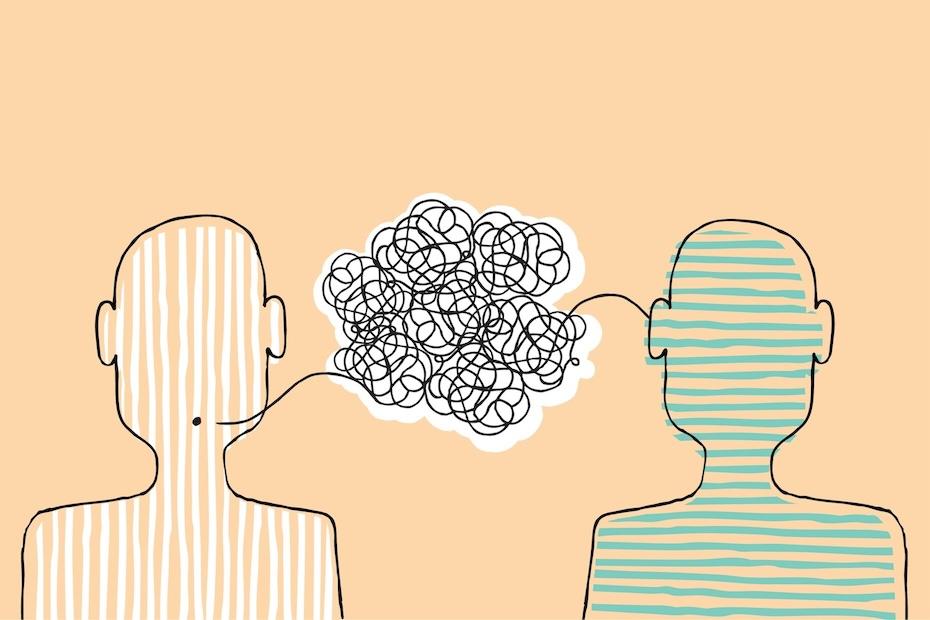
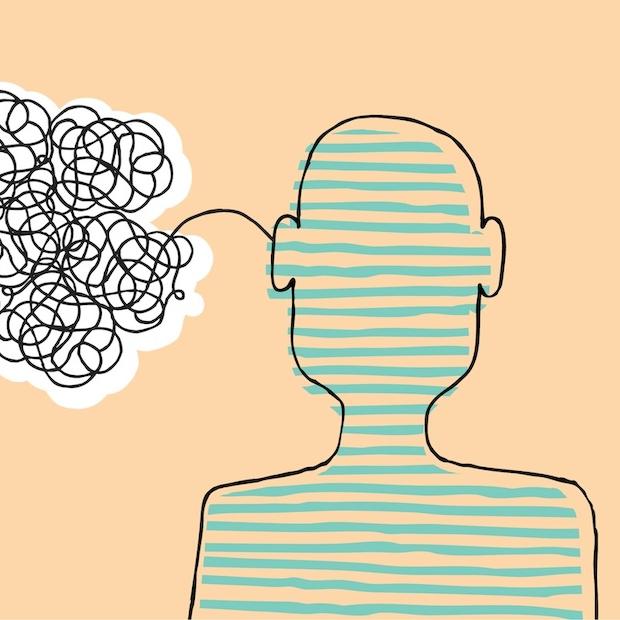
Consumers are all ears when it comes to corporate sustainability, but many brands are staying quiet. (Image credit: CurvaBezier/Adobe Stock)
Over 80 percent of companies plan to spend more on sustainability efforts like energy efficiency, emissions reduction and pollution prevention this year. But many of them won't talk about it.
As global regulators crack down on greenwashing and the political pushback against environmental, social and governance (ESG) principles in the U.S. continues, a growing segment of companies are staying mum about their sustainability work.
But this play-it-safe strategy is the opposite of what stakeholders are looking for. Among U.S. consumers, 69 percent agree businesses should communicate more — not less — about what they're doing in the areas of sustainability and social impact, according to new research from TriplePundit, our parent company 3BL and the research technology firm Glow. That includes 75 percent of Gen Z and 74 percent of millennials who want to see businesses communicate more about their efforts and progress.
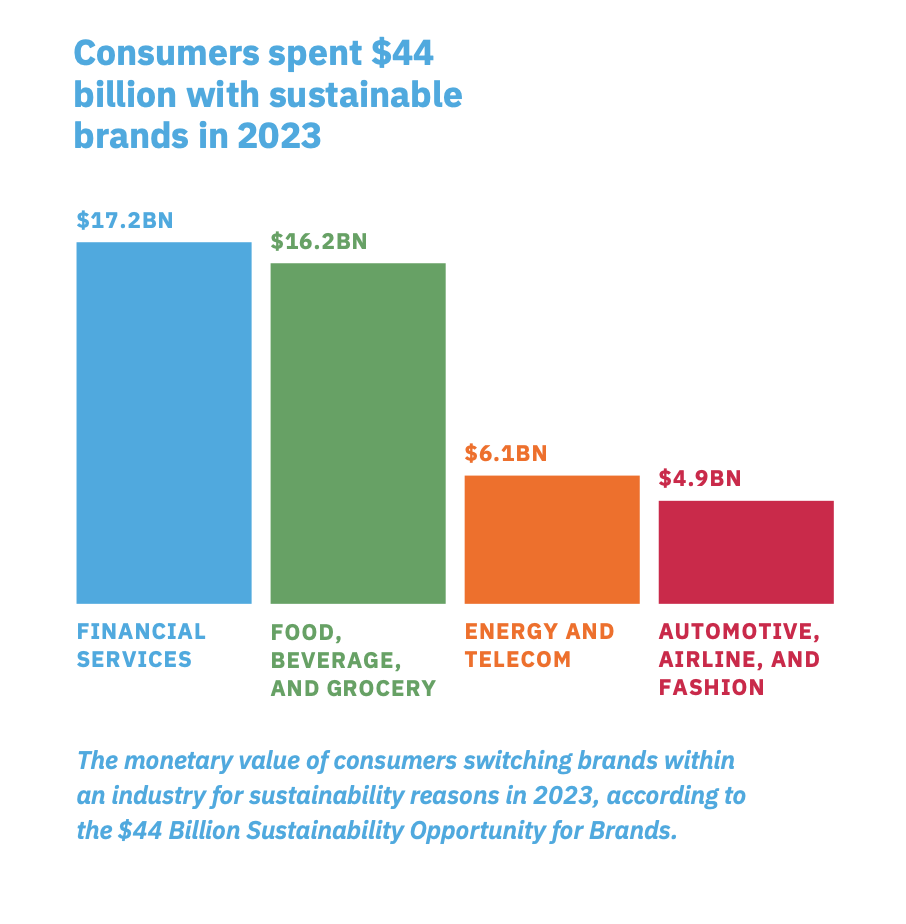
What's driving the $44 billion switch to more sustainable brands?
Our latest research builds on the findings of The $44 Billion Sustainability Opportunity report we released with 3BL, Glow and panel partner Cint earlier this year. That first-of-its-kind analysis attached a dollar figure to the value of consumers switching brands for sustainability reasons — adding up to more than $44 billion across 12 industries in the U.S. alone. A quarter of the consumers we surveyed even stopped doing business with a brand in 2023 because of its social or environmental behavior.
The 2024 Consumer Insights & Sustainability Benchmark takes a closer look at what's driving this billion-dollar shift, how consumers define companies as sustainable, and what they expect from the business world this year.
Read on for some of the standout findings, including how consumers perceive companies that stay quiet, the behaviors they're adopting for the sake of sustainability and the many reasons why the "anti-ESG" movement is failing to resonate.

Quiet companies leave public perception up to chance
A growing segment of consumers are willing to seek out and validate a company's sustainability information on their own. Nearly half said they search for information about businesses’ sustainability credentials using tools like Google (36 percent) or use sustainability rankings or lists available online (9 percent).
If companies choose not to communicate, consumers will make their own assumptions, and they may not always be positive. Sixty-eight percent of consumers agree with the statement: “Companies that actively communicate their sustainability efforts have a more positive impact on the environment and society, compared to those that do not.” Only 10 percent disagreed. Meanwhile, over 40 percent of consumers assume quiet companies are either “not doing anything” to reduce their environmental impact or “need more substantial environmental initiatives.”
"What we learn is that greenhushing isn’t always a huge detriment to businesses, but it misses the opportunity for business leaders to tell their own sustainability stories and be recognized by consumers," TriplePundit contributor Andrew Kaminsky wrote in the report. "Instead, with the split on how consumers perceive silent companies, business leaders essentially relinquish control and leave public perception up to chance."
Talking about failure is good, not bad
Companies are often reluctant to talk about things that didn't go to plan. If they miss a sustainability target or sunset a social impact program after little success, it seems easier to quietly remove messaging about the effort from their websites and never mention it again. But consumers say they don't hold it against businesses when they talk about failure. Actually, it's quite the opposite.
We posed a scenario to consumers: “A company launched a program aimed at reducing its social and/or environmental impact, but it wasn’t effective. The company scrapped the program, and leadership decided to talk about the failure and what they learned with their customers and other stakeholders.”
The majority of respondents (44 percent) said they'd think better of the company "because they were transparent." Another 19 percent wouldn't feel strongly either way, saying: "Not everything is going to work, and that’s not a big deal to me." Only 14 percent would think less of the company because it hit a bump and chose to talk about it.
"It’s all about how business leaders react to failure or underperformance," Kaminsky wrote. "If something didn’t work, discuss what you learned from it and the changes you plan to make. Looking at problems through a lens of progress and learning is better than not reporting the failure or completely ignoring it."
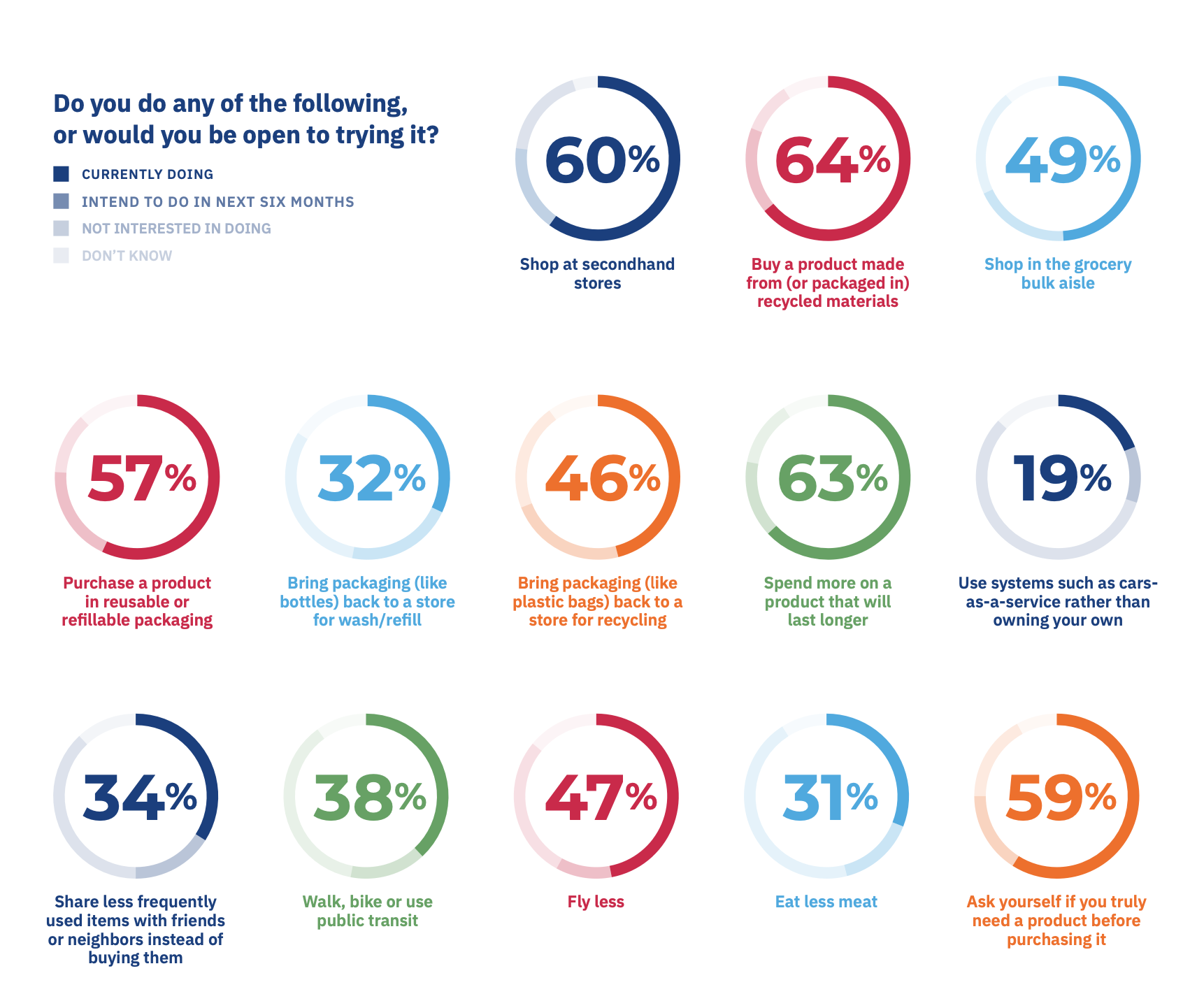
Consumers are willing to change their behavior for sustainability, and they want companies to help
While some in the business world question whether Americans are "ready" to change their behavior for the sake of sustainability, this narrative is increasingly at odds with how people really feel.
Over half of Americans say they’ve already made lifestyle changes in order to reduce their impact on people and the planet. Consumers are shopping secondhand, choosing products made from recyclable materials, and seeking out consumables in reusable or refillable packaging at rates higher than we observed in 2023. Nearly half say they are flying less to reduce their carbon footprints, and around a third are eating less meat.
Don't let the "anti-ESG" talk slow you down
"Anti-ESG" rhetoric has become more common on political campaign trails and cable news channels over recent years. Some U.S. states have even moved to restrict financial firms deemed to be associated with ESG investments from doing business within their borders. Naturally, the noise has some business leaders spooked. But when it comes to the U.S. public, anti-ESG messaging isn't exactly hitting home.
For starters, only around a quarter of Americans even know what ESG is, with most simply using the term "sustainability" to describe efforts to safeguard communities and the environment.
For those who do recognize the term ESG, perception is mostly positive: 69 percent of consumers said businesses should use ESG principles to quantify and improve their impact on people and the environment, compared to only 16 percent who said they shouldn't. Nearly 89 percent of consumers who recognized the term ESG said their perception of whether businesses should use ESG principles has either increased or stayed the same over the past year, with 42 percent saying: “I feel more strongly now than I did a year ago that businesses should be using ESG principles.”
How to engage consumers
Along with insight into public preferences, the 2024 Consumer Insights & Sustainability Benchmark includes best practices for reaching and connecting with consumers based on what they told us they'd like to see. That includes how to combine data with storytelling to drive consumer trust, where to reach different audiences with sustainability messaging, and how to position corporate sustainability efforts through a solutions lens. Check out the full report for our recommendations.
Climeworks’ Iceland Carbon Capture Plant is First to be Puro Standard Certified
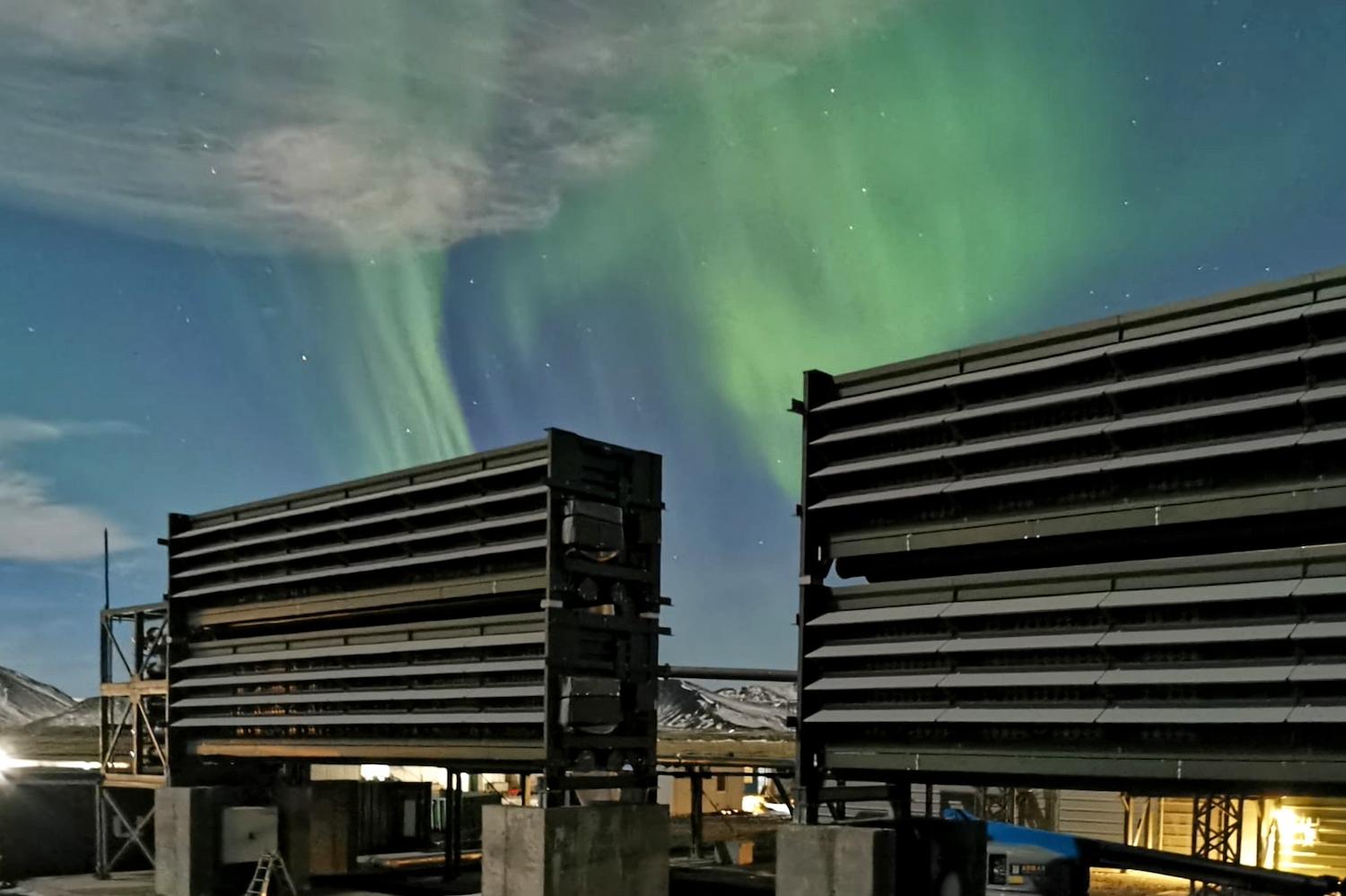
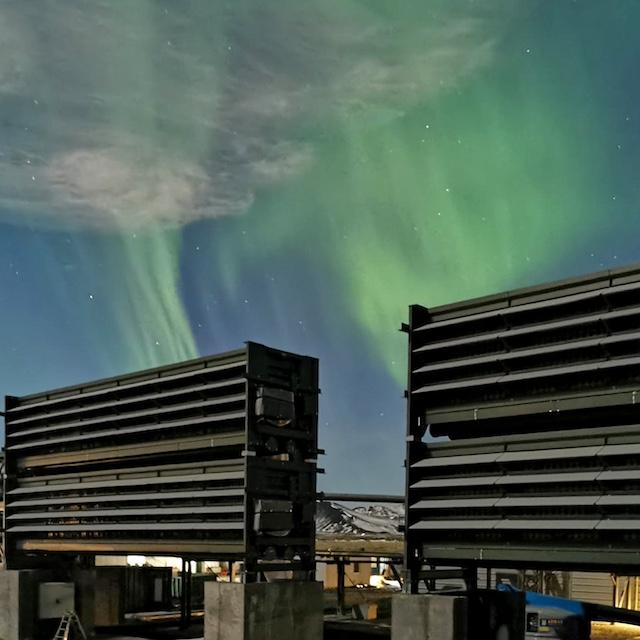
Climeworks' Orca plant under the Northern Lights in Iceland. (Image courtesy of Climeworks.)
In a significant milestone for the carbon removal industry, Climeworks is the first direct air capture company to receive third-party certification under the Puro Standard for its carbon dioxide removal activities. Climeworks’ Orca plant in Iceland was certified by Puro.earth after a rigorous evaluation and third-party auditing process.
The Puro Standard is recognized as the first comprehensive framework tailored specifically for engineered carbon removal methods within the voluntary carbon market. It is designed to ensure carbon removal solutions are transparent and high quality. Certified carbon removal activities meet stringent criteria such as requiring that the carbon is traceable, wouldn’t be captured without this intervention, and will be stored for hundreds to thousands of years.
“With carbon removal in general, you have to remove more than you are emitting,” said Marianne Tikkanen, co-founder and the head of standard at Puro. “This certification solidifies a milestone in Climeworks’s journey. Direct air capture generally, and Orca specifically, have reached a level of maturity that allows them to be certified with universal rules. We are still going to see big improvements, but they are now showing the world where they are in their technological development and carbon removal journey.”
Orca was the first-ever, large-scale direct air capture and storage plant, meaning it pulls carbon dioxide straight out of the air around it. Powered by geothermal energy, it sucks in air with fans, filters out the carbon dioxide, and stores it underground. The plant can capture up to 4,000 tons of carbon dioxide each year, according to Climeworks.

Climeworks' achievement sets a new standard for the industry. Before this milestone, direct air capture projects were self-certified, adhering only to their own internal standards. To secure this certification, Climeworks instead met stringent external requirements, including a third-party audit paid for and overseen by Puro.
“We organize and pay for the audit to maintain maximum neutrality,” Tikkanen explained. “We act as the referee in the audit.”
To be certified, projects have to show that their carbon removal activities are required by law, that the carbon removed from the atmosphere and stored would not have been sequestered without the project’s operations, and that the carbon removal credits generated by the project are necessary to operate. Once audits are completed, Puro issues the carbon removal credits and publishes the documentation in its public registry.
The registry tracks the lifecycle of CO2 Removal Certificates, the organization’s carbon removal credits, from issuance to retirement. This allows stakeholders to verify and track the effectiveness of carbon removal efforts, ensuring that the removals are genuine and have not been double-counted.
Tikkanen acknowledges that direct air capture is not a silver bullet. “It’s not just direct air capture,” she said. “All removals have their place. Locality plays a role in all carbon removal models.”
For a direct air capture project to work, it needs to have access to clean energy because the project has to remove more carbon than it emits. It also needs access to the right type of geology and natural resources for reliable, long-term storage. And that can limit project viability.
“A lot of things have to fall into place to create a favorable mix for a project to happen,” Tikkanen said. “However, that is where innovation happens. I think we will see great cost-saving and efficiency innovations in direct air capture and storage in the coming years as people try to find optimal conditions.”
Orca is at the forefront of innovation, testing its equipment in Iceland’s harsh terrain with extreme seasonal conditions, including wind and ice. “They are testing their equipment in the worst possible conditions and still finding ways to make it happen,” Tikkanen said.
The project’s impact extends beyond its technological achievements, benefiting the broader community and raising awareness about the cost of removing fossil fuel emissions from the atmosphere. “It is good for people to see how expensive it is,” Tikkanen said. “Then, they can consider how they can emit less because it is always better to have not emitted at all rather than paying the high cost of removing it from the air.”
The certification under the Puro Standard marks a critical step for Climeworks and the direct air capture industry as a whole. Tikkanen acknowledged that Orca set a new precedent for the carbon market, encouraging other novel carbon dioxide removal projects to certify so projects around the world can be compared using the same metrics.
Reflecting on Orca’s influence on the future of direct air capture, Tikkanen drew an analogy to sports. “Orca, a first-of-its-kind technology, is like striving to become a top athlete,” she said. “The human perspective is to appreciate the risk-taking and be sympathetic to the bumps along the way. It takes courage to be transparent while you’re still developing.”
This Nonprofit is Closing the Reading Gap in Elementary Schools with One-On-One Support

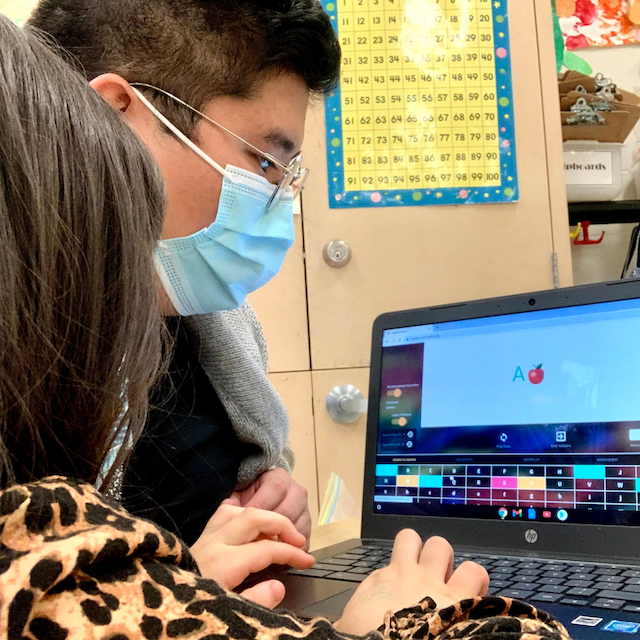
(Image courtesy of Chapter One Canada.)
Every year in Canada, 100,000 children who finish grade three are unable to read well enough for their grade level, according to Chapter One Canada.
“We're seeing kids in grades two, three, four and five who still don't know their letter names,” said Fabrice Grover, CEO of the nonprofit. “They can't pronounce the sounds that those letters make. They don't know how to sound out a three-letter word.”
Chapter One Canada is closing the reading gap by providing children with one-to-one support in their early education years.
“If kids aren't reading at grade level by the end of grade three, data shows that they're four times less likely to graduate high school,” Grover said. “And by the time they're 12, there's a five-year gap that forms.”
Socioeconomically disadvantaged families often lack the resources or time to support their children's reading development. There also may be a reluctance to return to school after the COVID-19 pandemic or due to poor transportation systems to get the kids to school.
“The parents might be frontline workers, or they might be newcomers to the country,” Grover said. “They might be residential school survivors and still dealing with the legacy of that intergenerational trauma. So the parents might not be as present as they could be compared to a more advantaged home where the families have more time to spend reading with their kids.”
This issue is worsened by stretched school budgets and schools’ inability to provide the extra support children need, be it due to cost or inadequate access to literacy specialists.
“There's a real need for one-to-one literacy instruction to help those kids catch up to their more advantaged peers so that they can have an equal shot at success in school and in life,” Grover said. “Our focus is on providing one-to-one reading support to families and to schools in a way that's cost effective and scalable.”
Chapter One uses a tutoring model known as "high-impact tutoring" or “short-burst tutoring.” It involves short, frequent 5-minute tutoring sessions that are intense and focused on specific literacy skills multiple times a week. These brief, targeted interactions keep children engaged and help them make substantial progress without overwhelming them.
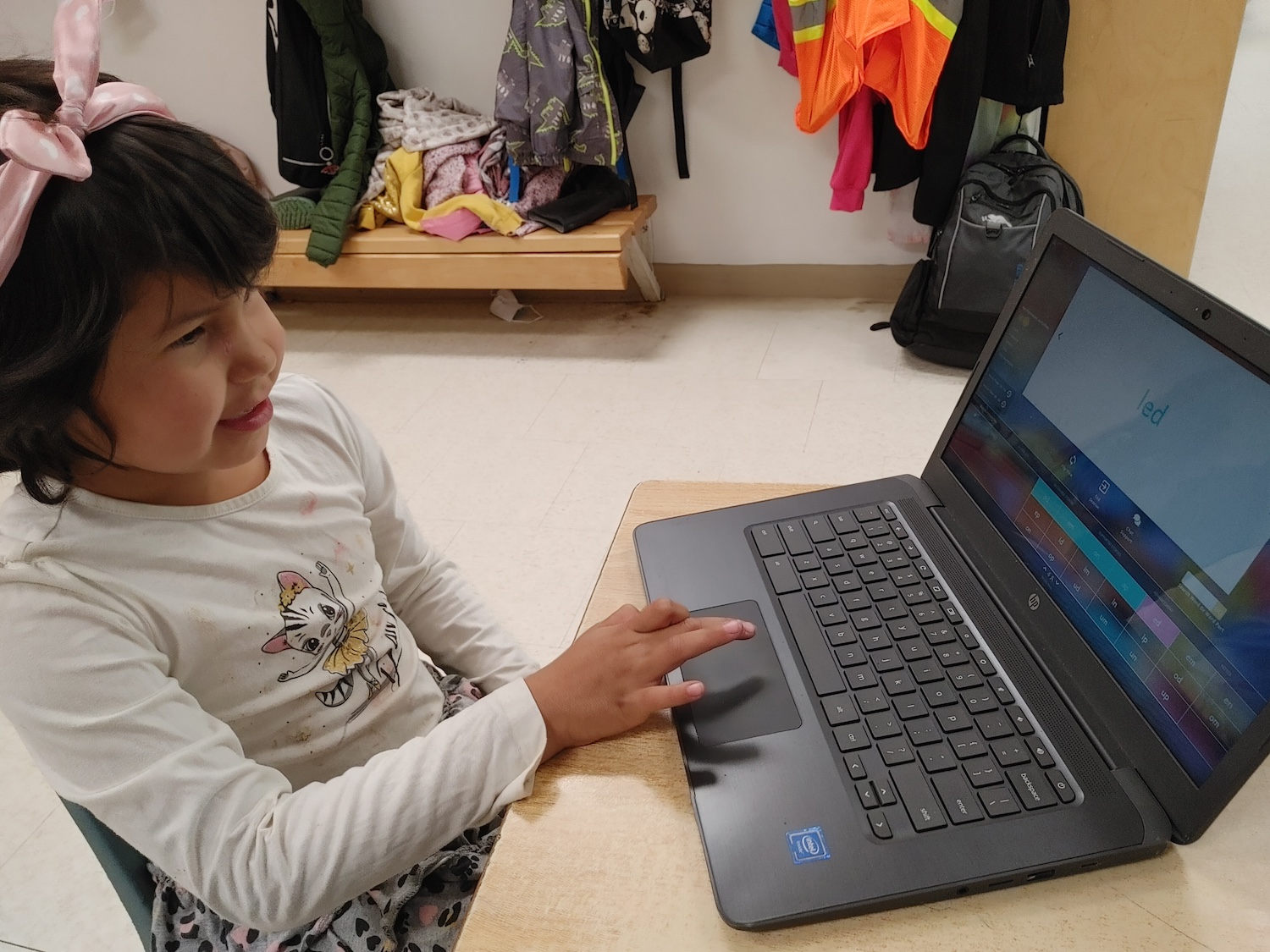
A Stanford University study of 800 children across 13 schools in Broward County, Florida, found that 70 percent of children who received early literacy intervention from Chapter One tutors reached reading and writing benchmarks by the end of kindergarten. These children also showed a 36 percent higher reading fluency rate in first grade compared to those who didn't receive support.
“We're confident we're on the right track, and that we're using the right approach,” Grover said. “Our challenge is getting the word out to schools and figuring out how to enlist the support of folks who can sign up families for this kind of reading intervention.”
Since its inception in 2018, Chapter One has tutored nearly 5,000 children, with 2,000 in the most recent school year alone. Currently active in 25 schools across eight Canadian provinces, the organization expects to be nationwide by next year.
As a 30-year-old nonprofit that began in the United States, Chapter One Canada operates independently with a 75 percent Indigenous board, as it primarily serves First Nations children, Grover said.
“However, our mandate includes all children in need, and public schools are increasingly adopting our program,” Grover said. “We started in Wikwemikong and then Toronto District School Board in 2018, and since then, we’ve grown organically through word-of-mouth referrals.”
Chapter One utilizes a simple, app-based system that connects tutors directly to students via smartphones. Tutors, who are trained and salaried professionals, use the platform to identify and address learning gaps, synchronizing assessment with instruction. This tutoring model is equally effective when delivered online at home.
“We have 45 tutors right now, and we expect to double that number in the next two years,” Grover said. “And through our participation in HP’s Digital Equity Accelerator, we intend to triple the number of kids in the ‘at home program’ by December 2025.”
The nonprofit received a $100,000 cash grant and equipment credit as part of the HP Digital Equity Accelerator Program, which supports nonprofits advancing digital inclusion. The grant will be used to purchase touchscreen computers for student interaction and hire local people within the communities to help increase awareness about the program.
“HP has also connected us to MIT Solve, and they give us access to their own staff who advise us on different areas of need,” Grover said. “I was really impressed by MIT Solve’s process, where they help us identify the areas where we need some support and then recruit experts to help us with those pain points.”
Chapter One wants to make its educational model a staple in public education systems globally, starting from its roots in Indigenous communities. They are already in the United Kingdom and the U.S. with plans to expand further.
The program is funded by the Canadian government through Jordan’s Principle, a federal program created to ensure First Nations children can access the support and services they need, making it free for families and schools. Schools are charged a fee to implement the program, but it is subsidized by corporate sponsors, making it more affordable than for-profit alternatives. Chapter One has over 270 volunteers from corporations participating in the tutoring program.
“We want to diversify our fundraising strategies so that we're less reliant on corporate support, which is how we started,” Grover said. “The next step is to attract investment from philanthropists and large international foundations who could really take this to the next level. And because it's already a global initiative, we can take lessons from different countries, and with the advance of AI, figure out what is the most effective solution in each of the scenarios we encounter.”
Deeply invested in making its resources culturally relevant and accessible, Chapter One established the Global Free Library featuring original storybooks co-created with the communities they serve, particularly focusing on Indigenous cultures and languages.
“This initiative came out of a request from the education leaders in the Manitoulin region where we first started in 2018,” Grover said. “They loved our program but didn’t recognize their kids in the text that we were using to help them learn to read.”
Users can engage with the texts and click on words to hear pronunciations. “Our Global Free Library commissions authors and illustrators from around the globe to create original stories that will inspire the children and adults who read them,” Grover said. “We want to triple the number of unique users of the global free library [by December 2025*].”
*Editor's note: Updated on June 28, 2024.
Mandatory Climate-Related Disclosures Usher in a New Era of Transparency
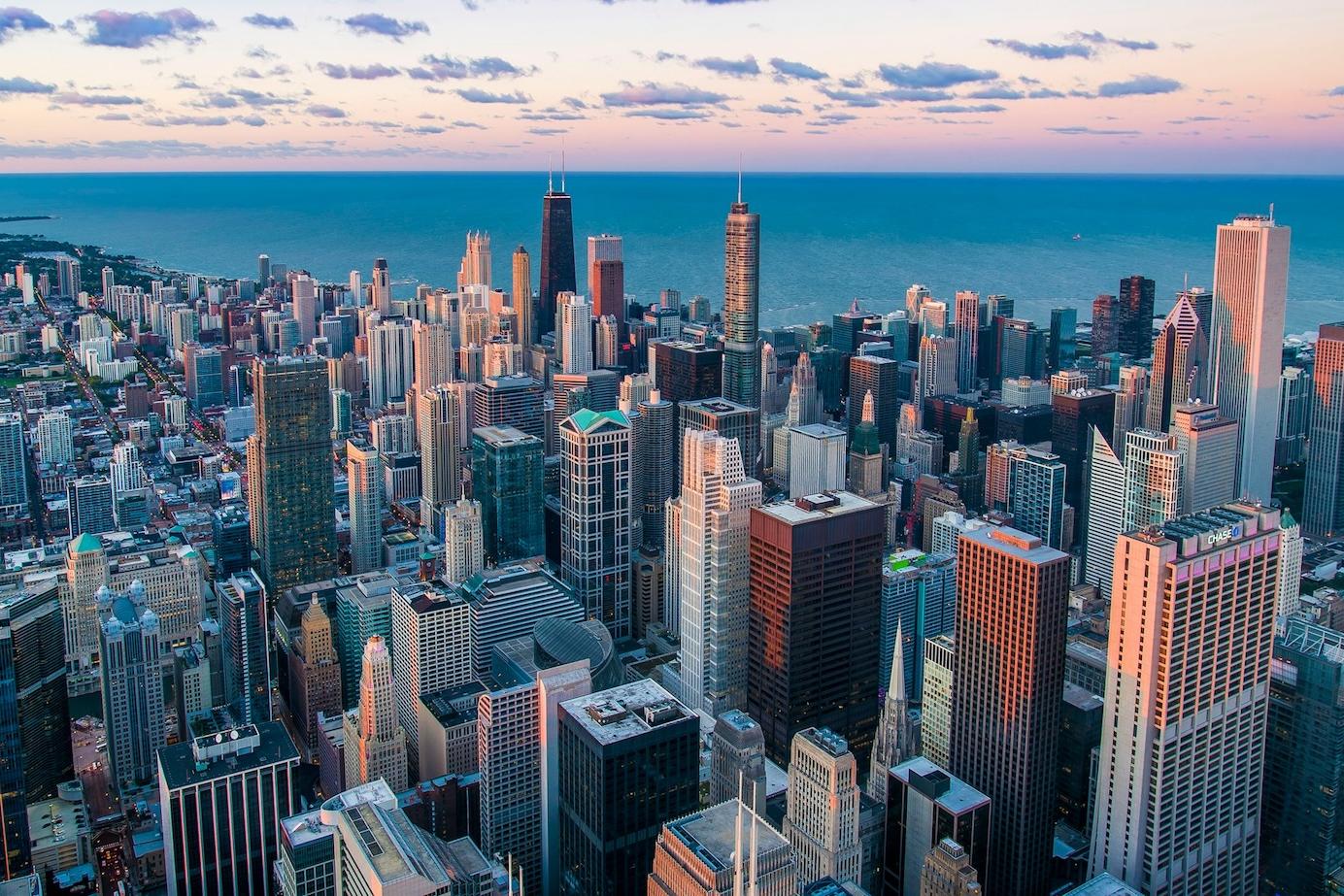
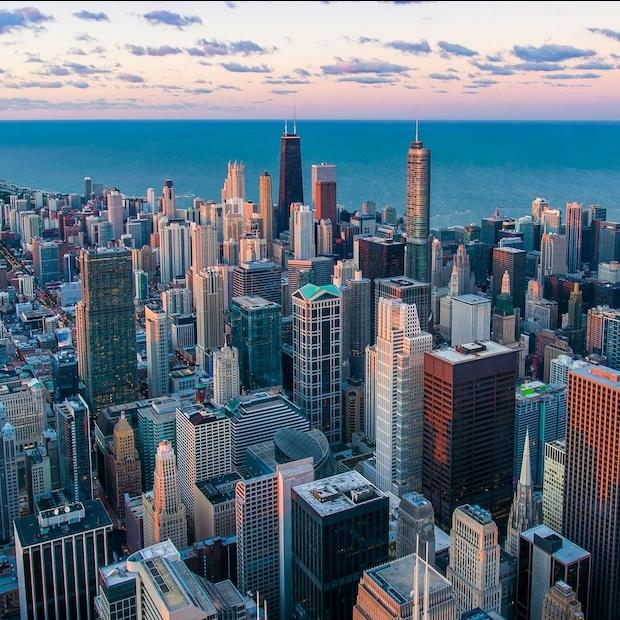
(Image: Pedro Lastra/Unsplash)
Transparency demands related to corporate sustainability practices have reached new heights. Stakeholders, including consumers, investors and employees, are becoming more vocal about their expectations for businesses to provide trustworthy information. In fact, PwC’s 2024 Trust Survey found that 76 percent of employees and 71 percent of consumers think it’s important for companies to disclose their environmental impact, and more than two-thirds want businesses to disclose their climate-related risks.
The U.S. Securities and Exchange Commission's climate-related disclosure rules are the most recent example of regulatory bodies implementing mandatory guidelines, joining an evolving regulatory landscape that includes rules already introduced from California, the European Union and the International Sustainability Standards Board.
Companies can build trust and accelerate their sustainability goals by being upfront and transparent about how they are managing climate risks, meeting established goals and weaving sustainability into their business strategy. Reliable and confirmed environmental, social and governance (ESG) reporting can be a key component of driving meaningful action around sustainability.
Navigating climate disclosures holistically
As leaders look to comply with the current regulatory environment, it’s important that they approach climate disclosure rules holistically instead of dealing with them in siloes. Operationally, this approach enables companies to streamline their ESG reporting processes. It also helps them build trust with their stakeholders by telling one, holistic sustainability story.
For example, many companies currently disclose their carbon footprint by reporting on Scope 1 and Scope 2 emissions, which cover direct and indirect greenhouse gas emissions from company-owned sources, such as vehicles and facilities, and purchased electricity or heat. However, they will likely need to expand their reporting frameworks to meet reporting requirements like the EU’s Corporate Sustainability Reporting Directive (CSRD), which requires the inclusion of Scope 3 emissions, or the emissions generated by suppliers that source, produce and transport a company’s materials in addition to the logistics, use and disposal of the products they make.
For a retail company that needs to report its Scope 3 emissions, for example, this means they’ll likely need to collect and disclose data around the emissions generated by the people they work with, such as the companies that make the products they sell, the trucks that bring the products to the store, and what happens to the products when people are done using them. With the right approach, the store can report their emissions in a way that shows one meaningful, consistent picture to their stakeholders while complying with varying regulations.
This holistic approach can also help companies navigate legal complexities around ESG reporting like the recent stay on the SEC climate disclosure rules. Given the overlapping nature of many of the sustainability requirements worldwide, there are systems, processes and controls that can be developed to position a company to produce data in support of any current or emerging sustainability reporting responsibilities, helping to set up companies to comply with the SEC rules in a timely fashion if the stay is lifted.
Establishing the right team
Sustainability initiatives have typically been overseen by the chief sustainability officer (CSO). However, considering the recent regulatory requirements, chief financial officers (CFOs) should be actively involved as sustainability data becomes integrated into a company's annual report, such as the 10-K filing.
Given the diverse and specific requirements of various climate regulations, the CFO and CSO should collaborate closely on the company's sustainability initiatives and its ESG reporting.
ESG controllers, an emerging role under the CFO given growing sustainability regulatory requirements and initiatives, will likely play a significant role as the sustainability landscape continues to evolve. These professionals, responsible for overseeing and verifying the reliability of ESG reporting, can act as a bridge between an organization’s finance and sustainability teams by bringing the relevant experience to collect and verify sustainability information.
ESG controllers can help their organization see the whole picture when it comes to ESG reporting. Where the CSO may lack experience around financial information and sustainability might be new to the CFO’s job description, the ESG controller can help break down barriers between financial and non-financial reporting.
A tech-enabled approach
Meeting the data requirements for climate-related disclosures in ESG reporting can be a daunting task. However, companies can overcome this challenge by harnessing the potential of technology, such as emissions collection systems, data lakes, ERP modules or cloud-based software to capture last-mile reporting. With investments in the right software and systems, businesses can streamline the collection, verification, and reporting of vast amounts of internal and external data.
PwC's leadership in financial and ESG reporting offers clients a valuable advantage by helping to streamline the process of adopting leading practices and establishing holistic processes right from the start. For instance, PwC assists clients in enhancing the benefits of their technology investments in ways such as leveraging cloud-based software to create an automated environment that fosters governance, transparency, and the production of quality ESG reports.
The integration of data with sustainability metrics goes beyond reporting; it enables businesses to drive sustainable practices, identify areas of high environmental impact, and implement targeted strategies to mitigate risks and improve their ecological footprint. Through advanced analytics, businesses can identify patterns, trends and correlations within their sustainability data.
Meeting the ESG reporting moment
The regulatory environment around ESG reporting is shifting from voluntary to mandatory disclosures, signaling a leap forward for corporate sustainability initiatives more broadly. Regardless of where a company might be on their ESG reporting journey, the growing list of state, federal and international regulatory bodies now requiring disclosures signal that it’s time for companies to take action, or risk falling behind.
PetSmart Wants to Turn Your Dog’s Old Toys Into New Ones
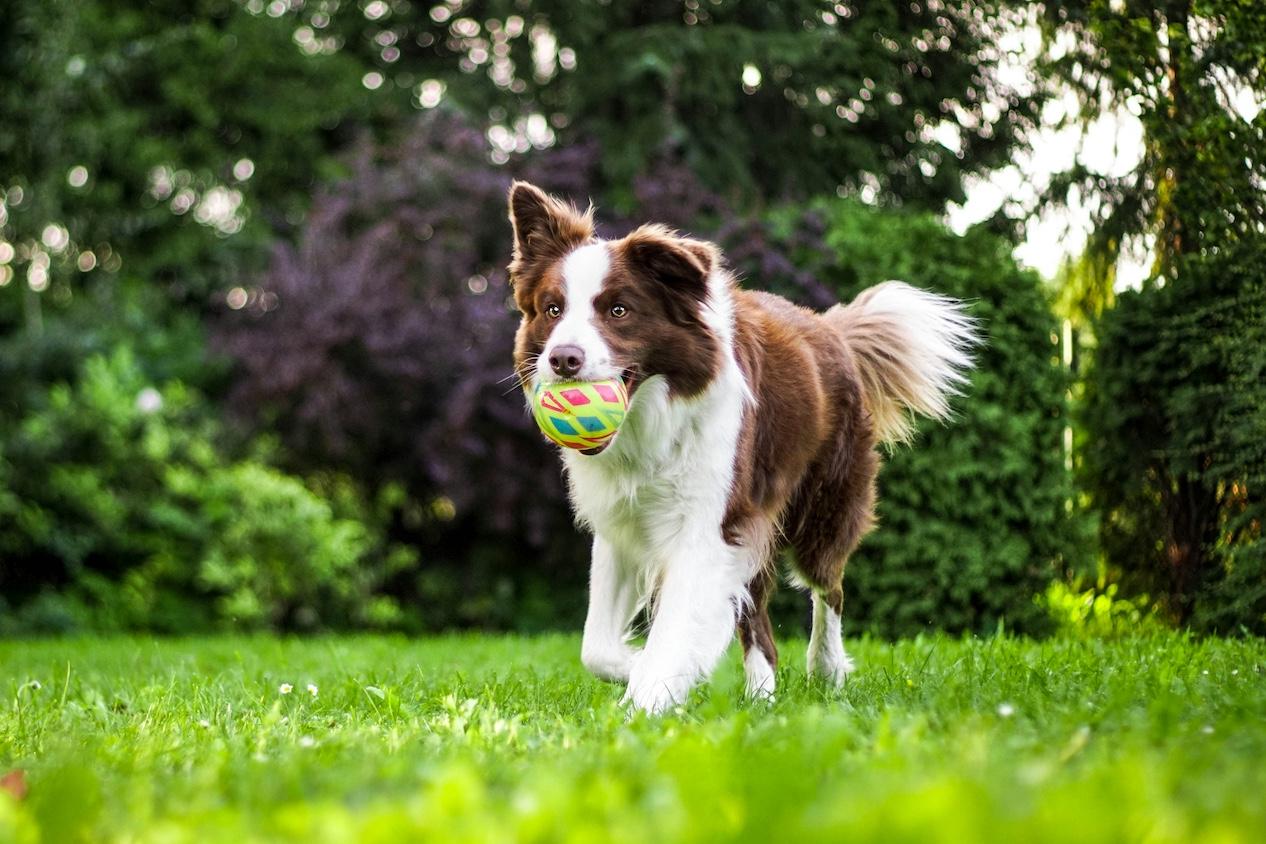
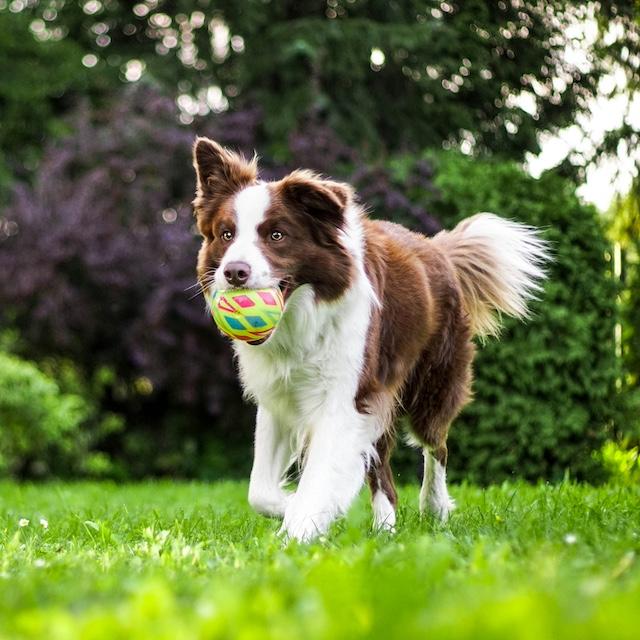
(Image: Anna Dudkova/Unsplash)
“Seventy percent of pet parents are looking for ways to make a positive impact on the environment,” Joanne Dwyer, vice president of corporate social responsibility and sustainability at PetSmart, told TriplePundit. “They want to be able to do that through easy, small changes that they can make in their daily life.” Which is why PetSmart is partnering with sustainable dog product maker West Paw to pilot an in-store toy takeback program.
They’re testing the pilot, which began last month, in 75 PetSmart stores across California, Oregon, Washington and Arizona. It’s starting on the West Coast market because of a higher likelihood of consumer participation, Dwyer said. The pilot was originally slotted for three months, but it may be extended. The hope is that it will be successful enough to make it worth expanding to more stores.
West Paw accepts its own Zogoflex and Seaflex toys by mail as part of its Join the Loop recycling program, but the partnership with PetSmart allows any brand of plastic or rubber dog toy to be reborn as new toys and products. All customers have to do is bring their furry friends’ worn-out toys with them on their next trip to a participating PetSmart and deposit them in the bin at the West Paw display. Recycling is limited to plastic and rubber — meaning no tennis balls, ropes, plushies or mixed material toys.
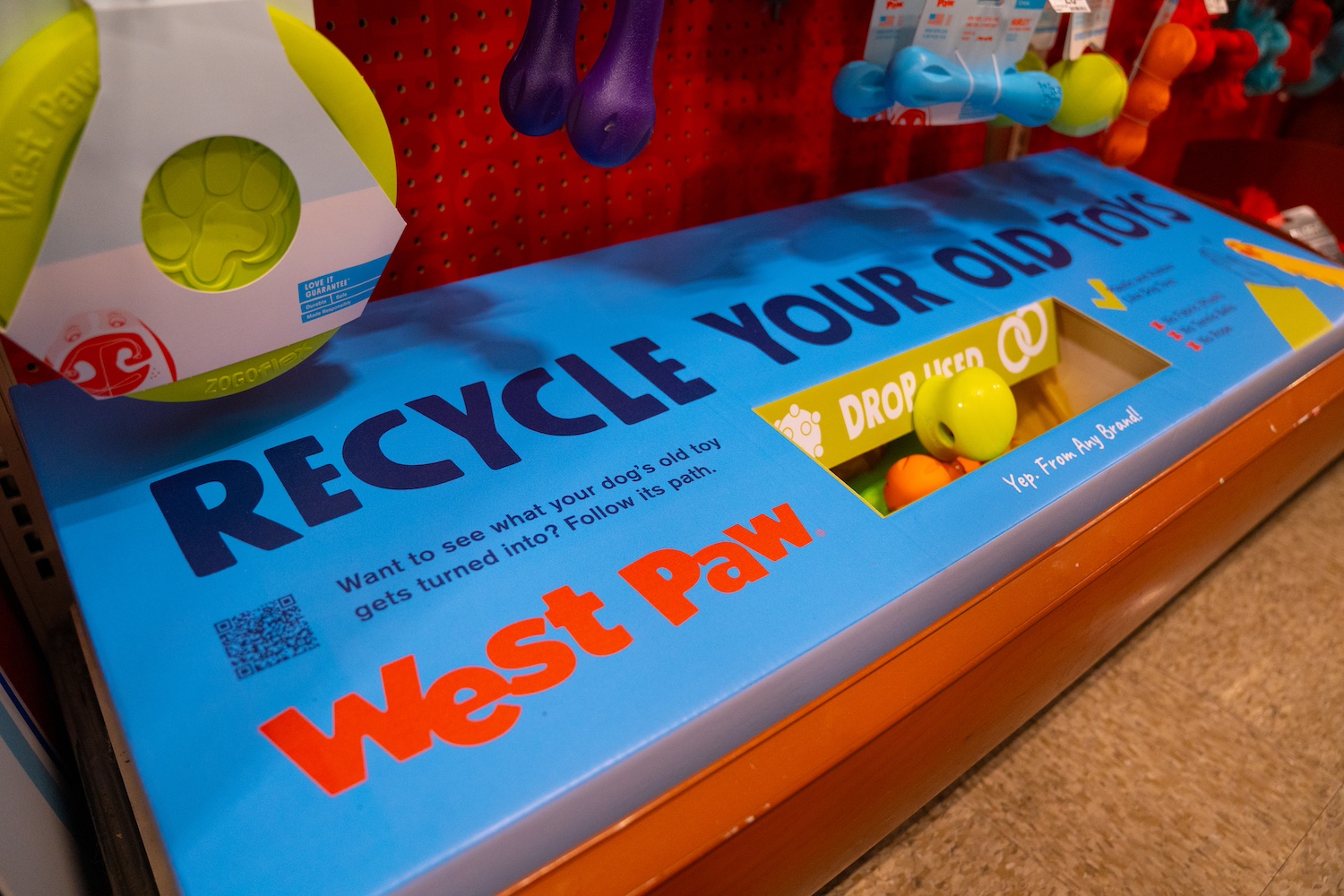
In addition to expanding West Paw’s takeback capacity to include other brands, the partnership with PetSmart eliminates the added waste and emissions associated with mailing the toys in.
“We're putting those toys on our own trucks that already travel back to our distribution centers,” Dwyer said, adding that the toys are sent to distribution centers near a West Paw recycler. “Being able to leverage that reverse logistics system is critical [to] sustainability ... because we're not adding extra freight as we would if we were mailing something.”
Once the toys are with the recycler they are separated and turned into pellets. The pellets are used to make new Zogoflex products — which are made of rubber and plastic and can be recycled in the same manner over and over again — and Seaflex products, which are made of a combination of Zogoflex and ocean-bound plastic.
While it’s too soon to know the impact of the in-store takeback program, Dwyer noted that West Paw recycled over 102,000 pounds of material into Zogoflex and Seaflex in 2023 alone. Not all of this comes from old toys, of course. The company also converts other plastic waste into pet products. By 2020, it salvaged over 16 million plastic bottles that would have otherwise gone to landfills.

“The volume of the toys that we collect is going to be one of the biggest metrics,” Dwyer said of how the pilot’s success will be measured. “[But] we're also going to be very interested in the customer feedback around the ease of use because, again, is this something that we can expect them to do over and over again? Is it easy enough? Memorable enough?”
Consumer response is positive so far. They appear excited about the toy takeback option, she said. Employee feedback will also be integral in measuring the program’s viability. If associates have to remove a substantial amount of items that don’t fit the recycling parameters, the company will have to rethink how the program is communicated.
Ultimately, the pilot’s success hinges on changing consumer behavior, which Dwyer recognizes as a significant challenge. Another is that the pet industry overall is behind on environmental action. “We don’t have a lot of opportunities, partnerships or avenues by which we talk about this within the pet industry,” she said.
PetSmart is also looking to change consumer behavior and give environmentalism in the pet industry a big bump with a second pilot later this summer. The pet supply company will partner with the recycling business TerraCycle to take back multi-layer pet food and treat bags that can’t be recycled through traditional means. That’s a big step in the right direction considering that the industry is responsible for 300 million pounds of plastic packaging annually, with 99 percent of the multi-layered stuff destined for unsustainable disposal.
“Part of what I think is important is we're really trying to make more sustainable products, like the West Paw product line, more accessible to all customers so that they aren't only found in sort of niche areas. We're trying to democratize sustainability,” Dwyer said. “We want everybody to be able to access these products that are better for our pets, better for the planet. Just seeing the initial response from customers on social media and hearing from some of our associates in stores has been really, for me, very hopeful and optimistic.”
Permitting For Energy Projects is Notoriously Slow: Reform is Needed to Put Communities First


(Image: Nikola Johnny Mirkovic/Unsplash)
This story is part of From the Frontline, a guest-contributed column where we hear directly from climate justice advocates and those who are impacted by climate change. If you're interested in contributing your perspective on climate justice and clean energy to this column, please get in touch with us here.
The U.S. Federal Energy Regulatory Commission (FERC) recently announced a long-awaited Grid Expansion Rule that requires regional utilities to create 20-year plans for updating the electric grid. The build-out of power lines has historically been sluggish and siloed, leaving the expansion of the grid ill-equipped to meet increasing energy demand. The outdated and fragmented grid also poses major barriers to clean energy expansion, limiting the benefits of solar and wind projects like affordable energy costs and good-paying green jobs.
The rule itself is resource-neutral — meaning it doesn’t prescribe a certain energy mix of renewables or fossil fuels — but progressives and conservatives agree that the rule will accelerate the expansion of clean energy projects while making the grid more resilient and reliable. However, the FERC’s new rule alone will not be enough to produce clean energy where it's needed. Getting permission to build clean energy projects poses perhaps an even greater threat to progress.
That’s why we need permitting reform. Even with record investments in clean energy from the Inflation Reduction Act (IRA), we won’t be able to maximize those funds without seriously improving how we build and maintain essential infrastructure. Those who will pay the cost of inaction are disadvantaged communities that are most impacted by climate change, have the least access to clean technologies, and struggle most to afford their energy bills.
Permitting and transmission reform can provide jobs and economic opportunity while reducing pollution, making electricity more reliable, and creating better health outcomes. This is about people and communities, especially those most impacted by poverty and pollution. Accelerating the deployment of clean energy and accompanying infrastructure means cleaner air and water, good-paying jobs, and energy bills that don’t break the bank.
However, the transition to cleaner technologies must be intentional. Speeding up permitting processes cannot come at the expense of thorough environmental reviews and robust community engagement. This is critical to not only confront environmental racism that plagues low-income communities and communities of color, but also to steward an inclusive green transition for communities that have relied on the fossil fuel industry for their livelihoods.
After decades of working to extract and refine coal, oil, and natural gas, many rural communities are at risk of being left behind. New clean energy and transmission projects need to be built sooner rather than later to stimulate rural economies and tackle air and water pollution.
The current process for obtaining permits to build energy projects is agonizingly slow. Approvals take an average of four years, but oftentimes that process can take over a decade. The Grain Belt Express is one example. It’s slated to connect renewable energy generated in Kansas to surrounding states, delivering over $13 billion in energy cost savings and creating over 22,000 jobs. The project has been caught in the throes of permitting since 2010, culminating in 14 years of delays that hinder the expansion of clean, affordable energy in the Midwest.
Getting permission to build energy projects is not only slow, but it also does not sufficiently protect communities. The National Environmental Policy Act (NEPA) requires federal agencies to consider the environmental and public health benefits of proposed infrastructure projects. It was designed to prevent environmental harm and harm to communities, but much harm has occurred since its inception.
In a growing number of instances, NEPA is used to prevent clean energy projects that would clearly benefit both the environment and communities. This is demonstrated by the fact that lawsuits are currently blocking solar projects more often than fossil fuel facilities or pipelines. The current process was designed with good intentions, but it is time to adapt it to better meet its goals.
Communities deserve access to cleaner, more affordable and more reliable energy. With new rules and funding dedicated to modernizing our outdated grid, now is the time to improve permitting processes. It won’t be easy; conducting meaningful community engagement, deploying new technologies, and finding common ground come with their own unique challenges. But we can’t afford to wait a decade to see the benefits of clean energy — especially for communities most impacted by climate change. They have waited long enough. With permitting and transmission reform done the right way, we can unleash the clean energy economy and create unprecedented environmental, economic, and health benefits for communities across the nation.
B&Q Launches Plastic Plant Pot Recycling Program


(Image: Markus Spiske/Unsplash)
When summer arrives, it brings plant sales and the urge to garden along. As you take home a new collection of plants this season, you might wonder what to do with all the plastic plant pots they come in. If you live in the United Kingdom, B&Q can solve your plant pot waste debacle. Launching over 100 plastic pot recycling stations across the country, the home improvement company has high hopes of starting a sustainable gardening revolution.
“At B&Q we have a strong connection to nature and have many sustainable products available in our gardening ranges,” Sanita Garley, the company's responsible business manager, told TriplePundit. “Understanding where we could help gardeners limit their impact was therefore a key place to start with this new initiative.”
The company built the recycling program as a closed-loop system, Garley said.
“We collect plant pots and plastic waste from the stations in our stores,” Garley said. “This is then sent to recycling, and we make the product out of the recycled plastic. The plant pots are taken to a reprocessing facility that makes them into plastic pellets which are then used directly in the making of a new plant pot.”
The final product, the Blacksmith Planter, is weather resistant, made of 100 percent recycled plastic and retails at £4.
Growing as a business means more than profit
B&Q is a trusted home improvement retailer. This endeavor was not a need for the company. If anything it might provide a challenge, something Garley said they didn’t shy away from. But improvement as a business isn’t as simple as making the most profit for B&Q, Garley said. Communities and the environment are also a key concern for the company.
“Our goal is to continue making changes to improve as a business and help build a better world for our customers, colleagues and communities,” she said.
The plant pot recycling initiative is already a hit in B&Q stores, “The response has been great, they’ve already become popular — in fact we sold out of the first production volume of planter pots in the first couple of weeks.”
Consumers care about sustainable practices
Concern for the environment is growing among Millennials and Gen Z, according to a 2023 survey by the consulting firm Deloitte. This concern is motivating their career decisions. They're holding companies to a higher standard and choosing businesses that offer sustainable policies and opportunities.
This trend is opening a space for companies to step up and create accessibility within their businesses for both employees and consumers, something B&Q is aiming for with its recycling initiative.
“As a business, we want to make a positive difference through tangible actions and continue to put innovation at the forefront of our approach to helping our customers make more sustainable choices,” Garley said. “These new recycling stations will allow us to repurpose something that would normally be discarded and help us in our goal to make more sustainable choices easier and more convenient for our customers.”
As the new adults of the modern world continue to grapple with rising temperatures and looming food scarcity associated with climate change, gardening is on the rise. And B&Q’s plant pot recycling initiative is helping the growing population of gardeners reduce their environmental impact.
Crowley Prioritizes Mariners’ Development, Inclusive Recruiting Amid Worker Shortages


Along with ongoing labor shortages across the U.S. workforce, the maritime industry is facing additional challenges. Crowley, a leading logistics, marine and energy solutions company, is among those turning to workforce development strategies centered on DEI (diversity, equity and inclusion) for solutions.
After testifying as part of a panel of industry leaders at a recent congressional hearing in Miami, Senior Vice President and General Manager of Crowley Shipping, James C. Fowler, pointed out that the most critical need facing the maritime industry is the shortage of mariners.
“The critical need that we have now is ensuring that we have adequate mariners in our system. Today we’re in a mariner shortage, a crisis across our industry. And we certainly need some support in ensuring that we can solve this together,” he said.
Fowler explained that this challenge has two facets. The first is attracting new talent and making them more aware of the industry, which Crowley has partnered with MARAD and others to address. The second is career progression, as the in-person requirements and out of pocket costs can turn mariners away. The certification process needs to be modernized to reduce the cost to mariners and provide materials and coursework digitally to make it easier for mariners to upgrade their licensing and advance their careers.
Besides efforts to broadly enhance mariner development and credentialing with the U.S. government, the company’s approach is particularly noteworthy because it integrates DEI to support traditional recruiting, development, and workplace safety approaches, helping to cement diversity as a feature in employee talent acquisition and engagement practices to broaden the pool of potential U.S. mariners.
Leveraging inclusion to make existing workforce programs more effective
Crowley is a family- and employee-owned business that began with a single rowboat plying the San Francisco Bay in 1892. Today, it spans 7,000 employees and a fleet of more than 170 vessels that the company owns outright or runs in an operator or management capacity.
The Crowley umbrella also covers a wide range of facilities on land, from office buildings to tank farms, and a diverse fleet of trucks, trailers, cranes and other heavy-duty vehicles.
It can be challenging enough to engage prospective employees in the various training, licensing and certification regimens from the government involved in Crowley’s operations. That’s why drawing from a diverse labor pool is increasingly critical.
In a conversation with TriplePundit, Ira Douglas, vice president of labor relations, explained how the company integrates DEI into its workforce planning by building on existing recruitment avenues.
“Knowing that maritime academy cadets are future vessel leaders, Crowley began integrating diversity, equity and inclusion components into our cadet shipping selection process, resulting in greater diversity selection,” Douglas said. “Additionally, we implemented a new recruiting system for the Thomas B. Crowley Sr. Scholarship Fund in 2021 to integrate DEI components into applications and focus on broadening the talent pool.”
The Scholarship Fund initiative was particularly effective, increasing the number of female cadet scholarship awardees from 6 percent to an impressive 40 percent.
“We are also working with our union partners on working groups to address cultural issues and develop benefits that allow for more inclusivity, such as maternity leave policies and programs,” Douglas said.
Centering workplace safety
A successful diversity hiring initiative does not necessarily translate into equity in the workplace. One-off diversity training sessions have gained a reputation for ineffectiveness. Equity and inclusion principles must be integrated with daily practice to accomplish lasting, long-term goals. At Crowley, he company’s prioritization of workplace safety, operationally, physically and psychologically, supports this holistic approach.
“Safety is core to our culture and Crowley has a zero-tolerance policy for harassment and discrimination,” Douglas said.
Crowley’s in-house workplace safety policies are fortified by the Every Mariner Builds A Respectful Culture (EMBARC) Standards recently adopted by the U.S. Department of Transportation, the Maritime Administration and the various U.S. merchant marine academies.
The standards are designed to support compliance with existing guidelines aimed at preventing sexual assault, harassment and other forms of misconduct. They are required for every U.S.-flagged commercial vessel operator that intends to employ members of the merchant marine industry.
“Crowley was the first company accepted into the U.S. Maritime Administration’s EMBARC program — which requires that all our vessels have crews fully trained on harassment and discrimination, multiple avenues for reporting incidents, timelines for performing investigations, and visible signs and posters with further information on these,” Douglas said.
The company also supports voluntary, employee-run business resource groups, including a mariner-based group, to provide developmental guidance and foster a culture of respect in alignment with the company's goals. Open to all employees, the groups span many parts of the workforce, including people identifying as Black, Hispanic, and Asian American Pacific Islander as well as veterans, women, LGBTQ+, multi-denominational Christian and multigenerational collective to break down generational silos.
In addition to in-house support, the business resource groups platform also supports Crowley’s external diversity outreach efforts.
The Black Resourceful Individuals Dedicated to Growth and Education (BRIDGE) group, for example, participates in a career and personal skills program with the youth mentorship organization Big Brothers Big Sisters. It also partners with local organizations like Lift Jax in Jacksonville, Florida, to donate school supplies and talk to students about maritime careers.
Collaborating and coordinating with other industry groups is also essential. For example, in working toward cultivating a female workforce, Douglas points out that Parker Harrison, Crowley’s chief risk and legal officer, served as president of the U.S. branch of the Women’s International Shipping and Trading Association for three years. Shandee Bowman, Crowley’s vice president of culture and inclusion, has also been recently appointed the chair of the Florida Diversity Council board of directors.
Next steps for the workforce of the future
In 2022, Transportation Institute, a nonprofit organization, surveyed maritime carriers and they received answers from 163 respondents. “Over 75 percent of responding fleets are currently struggling to fill or are delayed in hiring positions,” Douglas said. Almost half of respondents experienced delays and missed opportunities due to labor shortages.
“Additionally an expected 1,300 mariners will be needed through 2054 to operate new vessels to meet sealift capacity needs, and the offshore wind industry is expected to require as many as 4,400 mariners to support operations, according to the survey,” Douglas said.
Crowley also focuses on career readiness and scholarships for maritime students, including people in traditionally underserved communities.
“This is part of a larger educational ecosystem we are developing to advance the industry and support equity efforts with a heightened emphasis on women, Black or African American, and LGBTQ+ talent,” Douglas explained.
In 2023, the company completed an employee “Self ID” campaign to capture the makeup of its global workforce and help build appreciation for diversity. Other actions include support for LGBTQ+ equity.
Crowley is an excellent example of a company founded in the 19th Century that is preparing for the risks and opportunities of tomorrow. This includes a diversified workforce, new workplace safety standards and capitalizing on the emergence of new industries. Rather than letting challenges get in its way, the company is charting its own course for the future.
This article series is sponsored by Crowley and produced by the TriplePundit editorial team.
Image courtesy of Crowley
Taking a Stand Against Gun Violence Pays Off for Dick’s Sporting Goods


(Image: Mike Mozart/Flickr)
Dick’s Sporting Goods faced criticism and calls for a boycott from gun ownership activists when the company first began scaling back the sale of guns and ammunition in 2012. A dozen years later, the criticism continues, but Dick’s continues to respond to public concerns about gun violence — and expand into new and profitable lines of business instead.
Raising the bar against gun violence, and taking the heat
Dick’s Sporting Goods began removing assault-style rifles from its stores in 2012, after a 20-year-old murdered 26 children and adults at Sandy Hook Elementary School in Connecticut with the same type of firearm. Considering the company’s position as one of the top firearms retailers in the U.S., the decision was an attention-getter
Gun rights activists and gun safety advocates paid attention again in 2018 after Dick’s restricted gun sales to ages 21 and over. The company also removed some firearms and ammunition from hundreds of stores and destroyed its inventory of military-style, semi-automatic weapons after a 19-year-old student murdered 17 of his classmates at Parkland High School in Florida.
The decision to destroy the guns touched a raw nerve at the National Rifle Association. Dick’s “isn’t focusing on the actual problem, what it is doing is punishing law-abiding citizens,” the organization tweeted in April 2018, as reported by Fortune and other news organizations.
Among other actions since then, Dick’s removed all firearms and hunting equipment from one of its stores in Portland, Maine, in 2022. Its remaining three Maine stores also stopped selling firearms and hunting equipment between January and March of this year, following the murder of 18 people in Lewiston, Maine, by a U.S. Army reservist in October 2023.
Coincidentally or not, last week the National Center for Public Policy Research, right-wing organization, announced plans to criticize Dick’s gun policies at an upcoming shareholder meeting. The announcement cited a loss in shareholder value of $250 million due to former CEO Ed Stack’s “value-killing decision to halt gun sales,” calling it a “costly prioritization of progressive politics over profit.”
The organization also took aim at Stack personally, stating that the former CEO “thought his political beliefs about gun ownership gave him a license to treat the company like a personal plaything.”
But its announcement somewhat obscured the timeline and the facts.
When boycotts (don’t) work
Stack himself cited the $250 million figure in a 2019 interview with CBS This Morning, but he was not referring to lost shareholder value. His executive team calculated that the company would lose $250 million in sales after the gun restrictions in 2018.
In the same interview, Stack also expressed his personal feelings about discontinuing the sale of guns. That is different from treating the business as a “personal plaything.” As detailed in a Harvard Business School case study in 2022, Stack and his team meticulously weighed financial risks and benefits to the company before deciding to restrict gun sales after the Parkland massacre.
“Dick’s Sporting Goods did lose millions in sales in the months immediately following Stack’s announcement, but the chain’s revenues ultimately recovered through other sales in subsequent quarters,” wrote Jay Fitzgerald, the case study’s author.
Since then, Dick’s has continued to diversity its offerings, a practice it calls “omnichannel.” That includes emphasizing more ways for shoppers to buy, including in-store, curbside pickup and same-day delivery. In March of this year, the company announced that Q4 2023 delivered the largest sales quarter in its history.
“Our growth opportunities are significant, and we continue to prioritize investments in our future to fuel long-term omnichannel growth,” Stack, who moved from his CEO position in 2021 to take the title of executive chairman, said in a March statement.
Dick’s goes back to its roots
The current CEO of Dick’s, Lauren Hobart, also emphasizes the benefits of diversification. "With the continued success of our new store formats and our omnichannel experience, we will accelerate our investment in our growth strategies to drive our business forward and continue gaining market share in a fragmented $140-billion-dollar industry," she said in a statement.
Hobart was referring, in part, to the rollout of a new retail format called Dick’s House of Sport. First launched in 2021, the new venues feature turf fields, batting cages, and other indoor and outdoor elements focused on competitive sports. The company expects to have 20 such venues in operation before the end of the year, toward a total of 75 to 100 by 2027, along with other supporting programs like its new youth sports mobile app.
In 2021, Dick’s also introduced a specialty concept store in the Pittsburgh, Pennsylvania, area focused on promoting outdoor activities and encouraging public land conservation. The concept has since expanded to include locations in eight states, and last year Dick’s acquired the Walmart-affiliated Moosejaw outdoor apparel brand in support.
The emphasis on land conservation circles back around to the company’s roots as a single local store, Dick’s Bait and Tackle Shop. The shop was founded in 1948 by Ed Stack’s father, Dick, who is described as an avid fisherman.
By restricting gun sales and continuing to diversify into new retail and community formats, Dick’s is drawing on the lessons of recreational fishing — where discipline, community responsibility, and an appreciation of natural systems are all needed to sustain fish populations for everyone to enjoy. Meanwhile, the company is exposing itself less to the reputational risk of a customer buying a gun with murderous intent.
This exercise in community-building sets an example for other businesses to follow, and that is increasingly important at a time when a strong majority of the public is concerned about gun violence.
“Six in ten U.S. adults say gun violence is a very big problem in the country today, up 9 percentage points from spring 2022,” according to a 2023 survey by the Pew Research Center. An additional 23 percent of respondents said that gun violence is a “moderately big problem.” “Looking ahead, 62 percent of Americans say they expect the level of gun violence to increase over the next five years,” according to the research.
On the heels of last week’s U.S. Supreme Court decision striking down a short-lived federal ban on “bump stocks,” devices that can be attached to semi-automatic guns to enable more rapid firing, the expectation of ever-increasing gun violence could soon be realized in horrifying ways. Dick’s new business models can’t do anything about that, but all business leaders can help advocate for a restoration of common sense on gun safety.